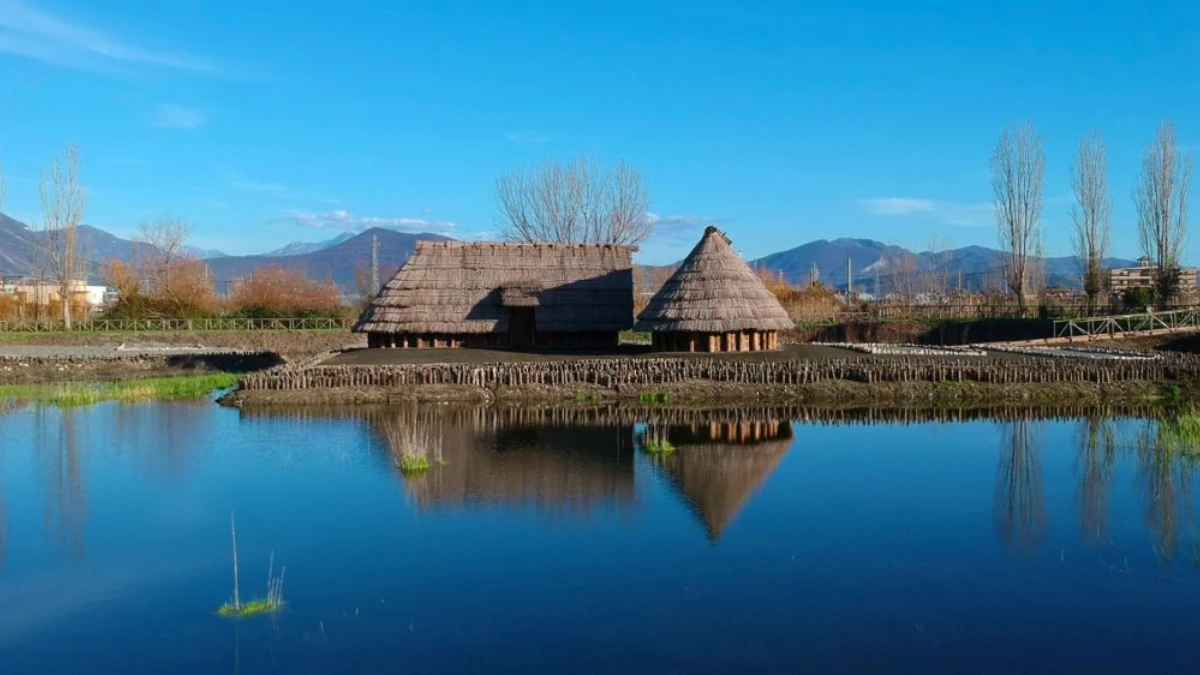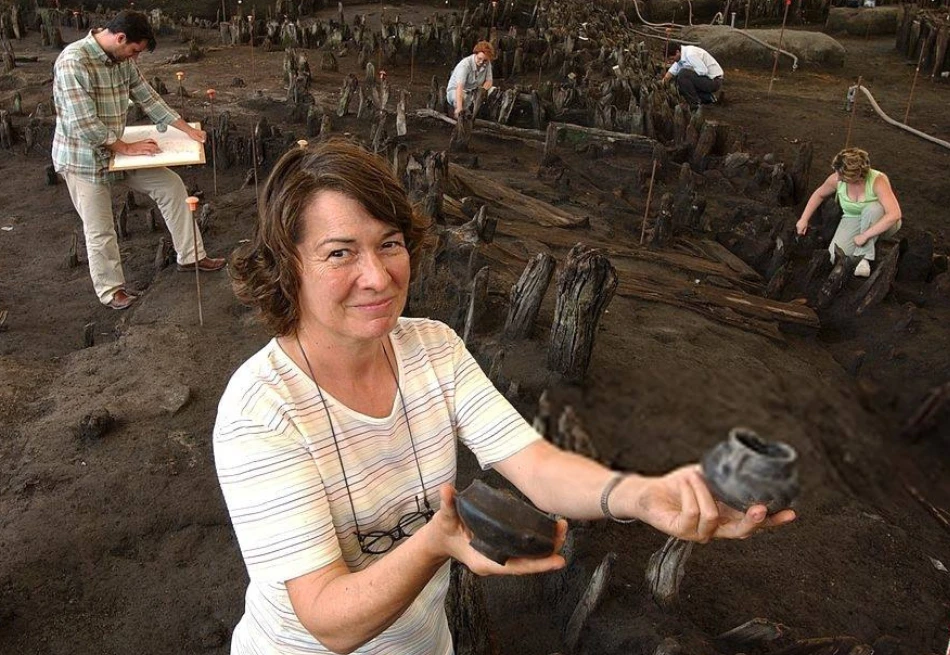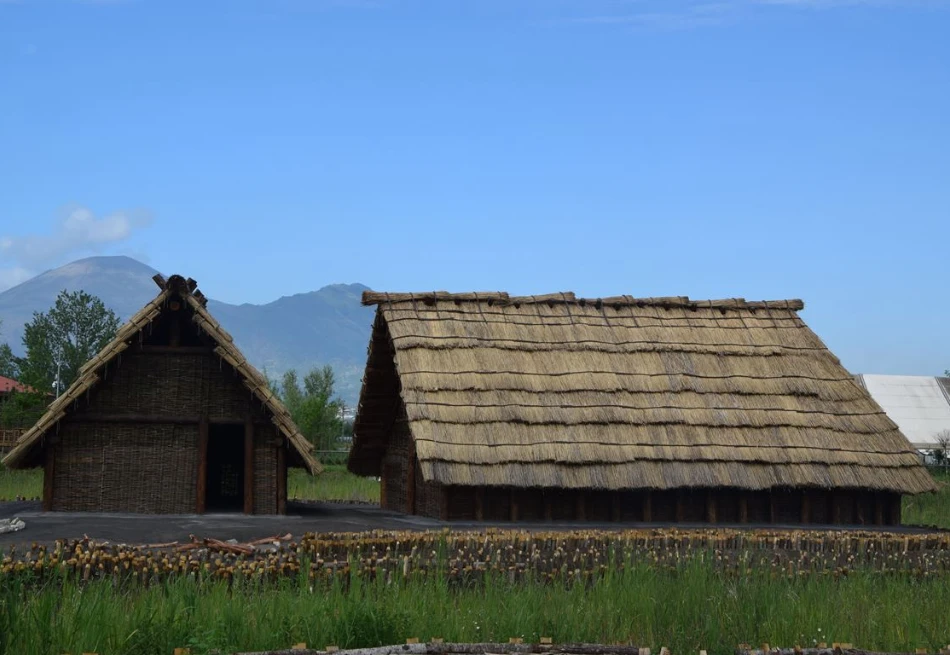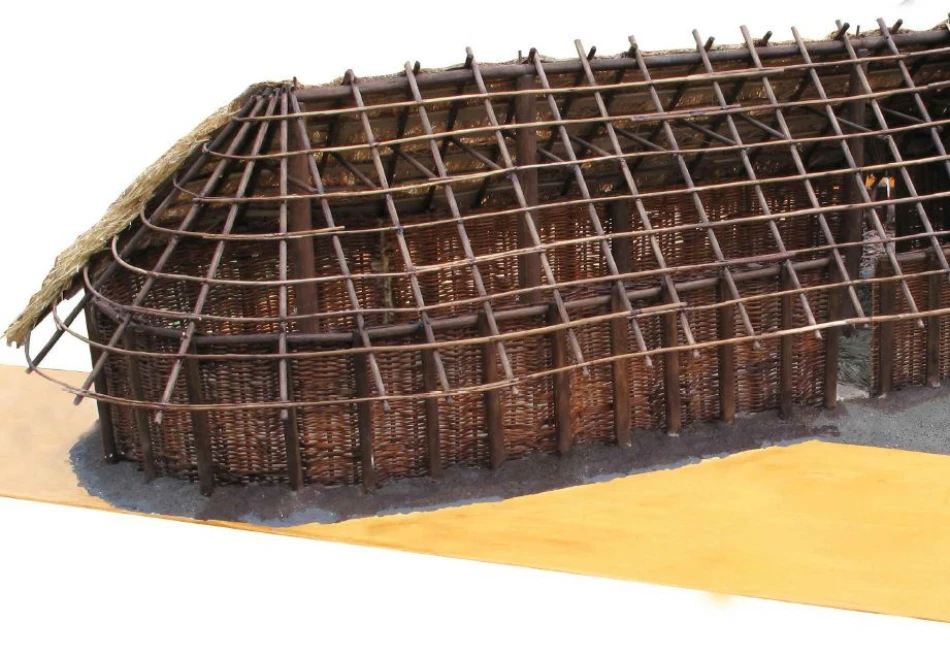Longola di Poggiomarino
The ancient canal village close to Pompeii
Rome
Naples
Amalfi
Sorrento
Positano

The hidden treasure of Longola di Poggiomarino is located 10 kilometers (6 miles) east of the famous city of Pompeii.
Nestled in the lovely upper Sarno Valley, this protohistoric site was recently placed under the control of the Campania Regional Museums Directorate and provides a fascinating look into life in the Middle Bronze Age to the 6th century BC.
Longola is unique because its settlements are built next to a river, with canals connecting small, man-made islands. This setup is like the communities in Ganvié, Benin, and the ancient marshlands of Iraq.
This article covers everything you want to know about this hidden site.
Not sure which Pompeii entry tickets are right for you? Let us guide you through the best options, from skip-the-line tickets and guided tours to convenient day tours to Pompeii, to make the most of your visit!
The accidental discovery of Longola

In 2000, workers excavating to lay new infrastructure unexpectedly discovered this complex canal-based village.
The Archaeological Park of Pompeii quickly began an in-depth investigation, revealing a large settlement with buildings on dry ground between the canals.
This discovery shed light on a lesser-known chapter of ancient Italian life, linking Longola to a wide network of trade and cultural exchange.
Related: Explore Pompeii with convenient day tours departing from Naples, Rome, Sorrento, Amalfi, and Positano.
Plan your visit to Pompeii:
# Discover Pompeii’s opening hours and timings
# Find the best entrance for your Pompeii adventure
# Explore the must-see highlights of Pompeii
# Get essential tips for an unforgettable visit to Pompeii
Stunning settlement

The residents of Longola were housed in huts made of perishable materials situated on the drier areas between the canals.
These huts ranged in shape and orientation from apsidal to rectangular, producing a lively and varied living environment.
The canals provided an amazing archaeological record, in addition to being important transportation routes and repositories of various biological elements.
Recommended
Hub for Trade and Craftsmanship

Longola developed into a thriving hub for handicrafts from the Iron Age onward. Skilled artisans worked with materials like metal, bone, glass paste, and amber, turning the site into a crucial hub for producing and trading artifacts.
The settlement’s strategic position made it easy to access both the coast and inland trade routes, making it an important part of the vast trade network that ran down the Sarno Valley.
The discovery of three pirogues (ancient dugout canoes) and a dock emphasizes Longola’s crucial part in this trading network, underscoring the city’s significance in the economic and cultural landscape of the area.
Wondering how to reach Pompeii from different locations? Whether you’re coming from Rome, Naples, Amalfi, Sorrento, or Positano, we’ve gathered the best travel options to make your journey easy and hassle-free.
Archaeological treasures
Longola’s unique aquatic environment has preserved delicate materials, creating an exceptional collection of archaeological finds.
This site fills a major gap in our knowledge of pre-Roman life in the Sarno Valley, which was previously known only through burial sites.
The discoveries at Longola improve our understanding of the area’s history and offer valuable insights into the settlement patterns before Pompeii became prominent.
Learn about the facilities available onsite, familiarize yourself with the rules and regulations for visitors, and enjoy convenient dining and refreshment spots within Pompeii. For a complete experience, you’ll also find nearby hotels for a comfortable stay after a day of exploration.
